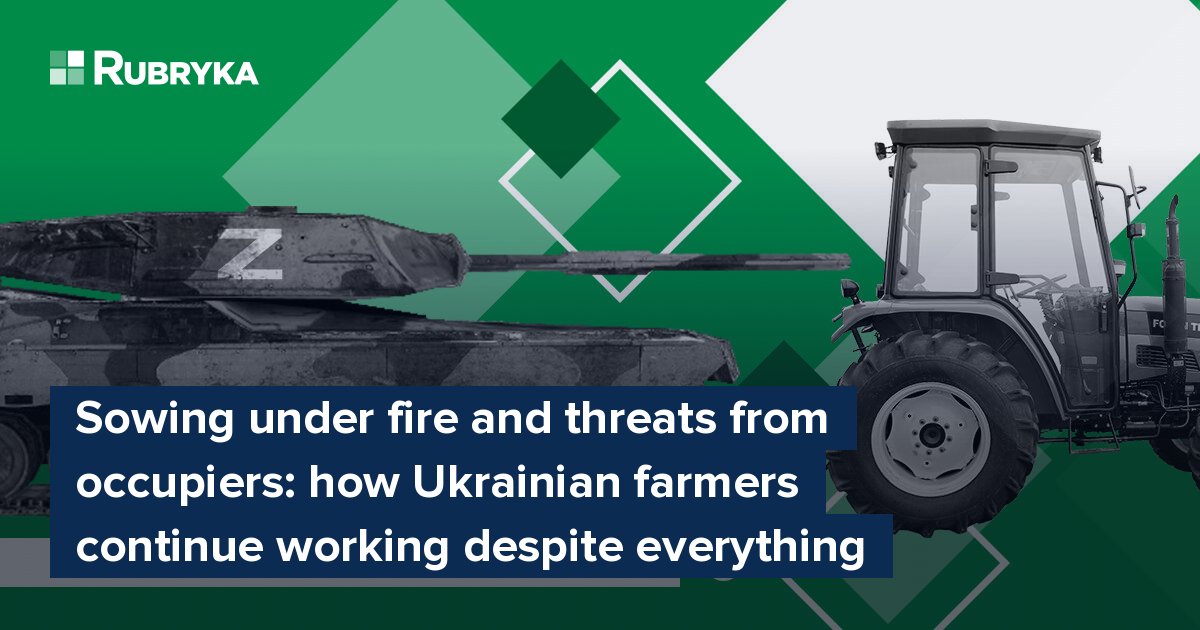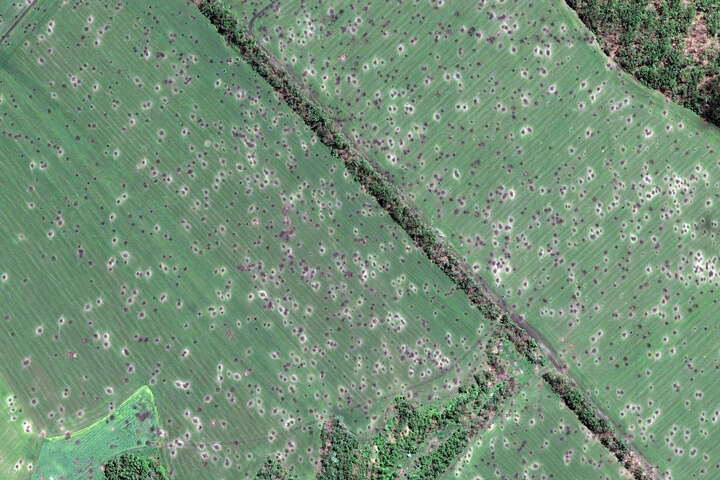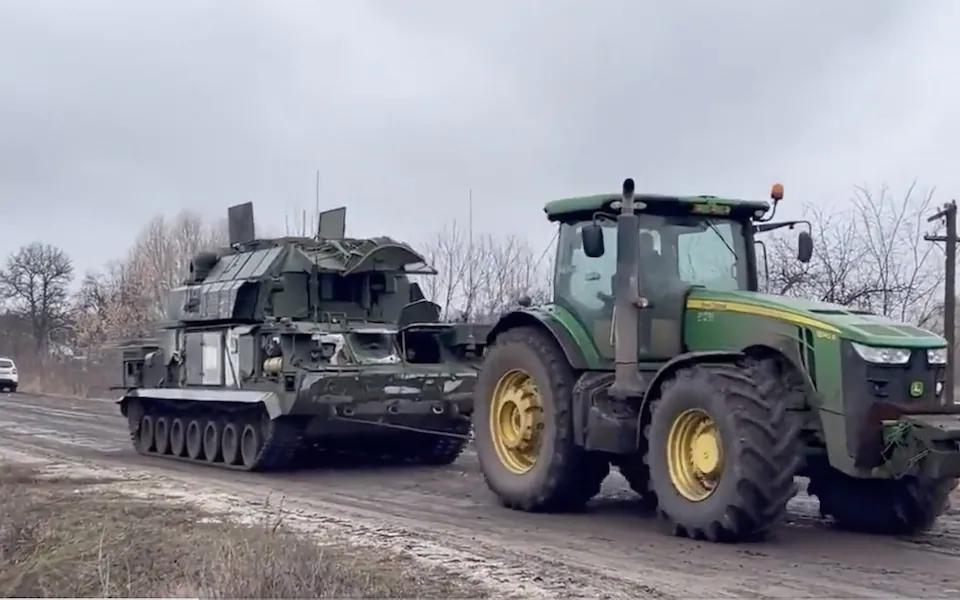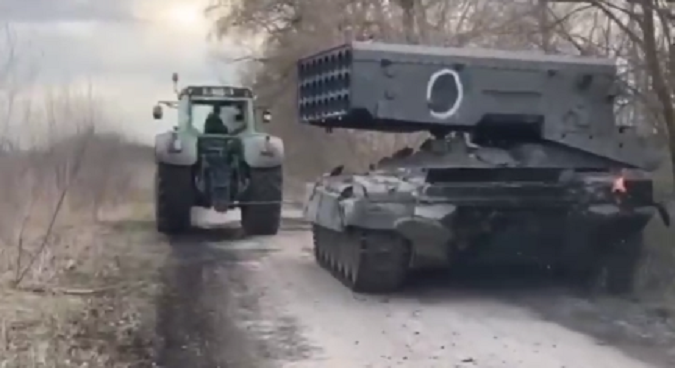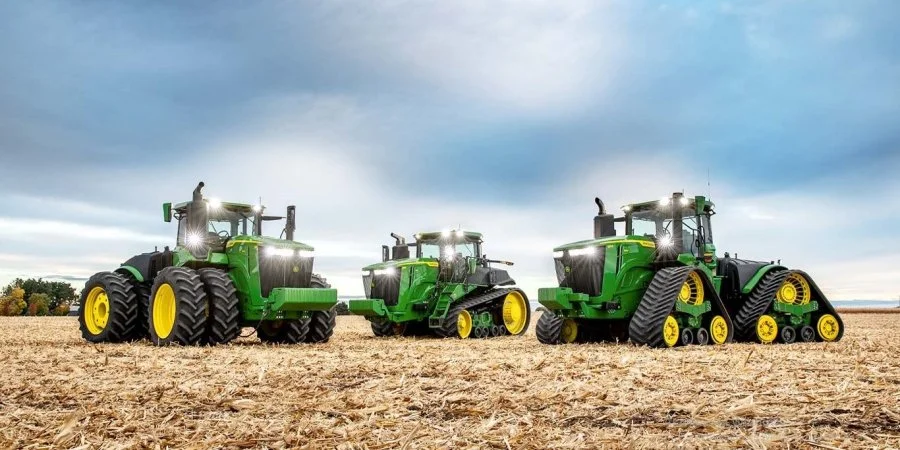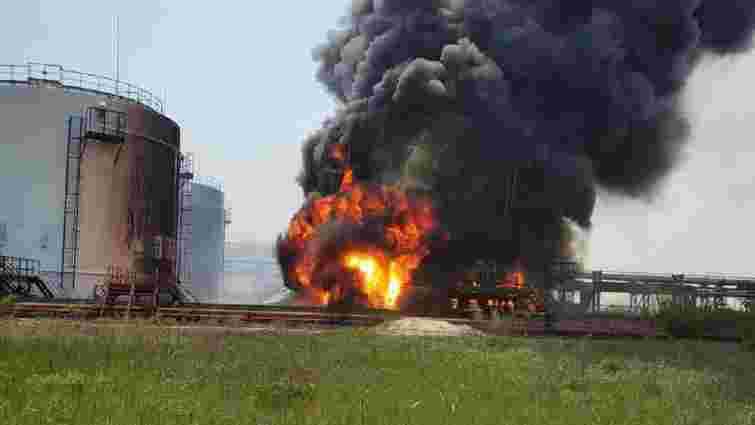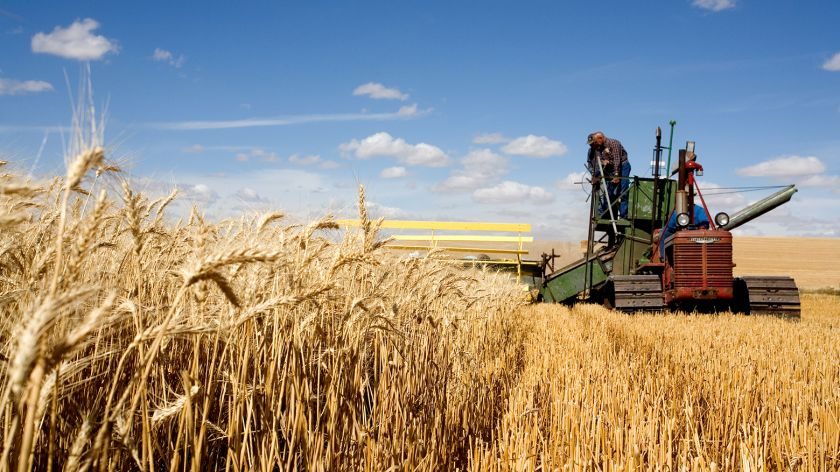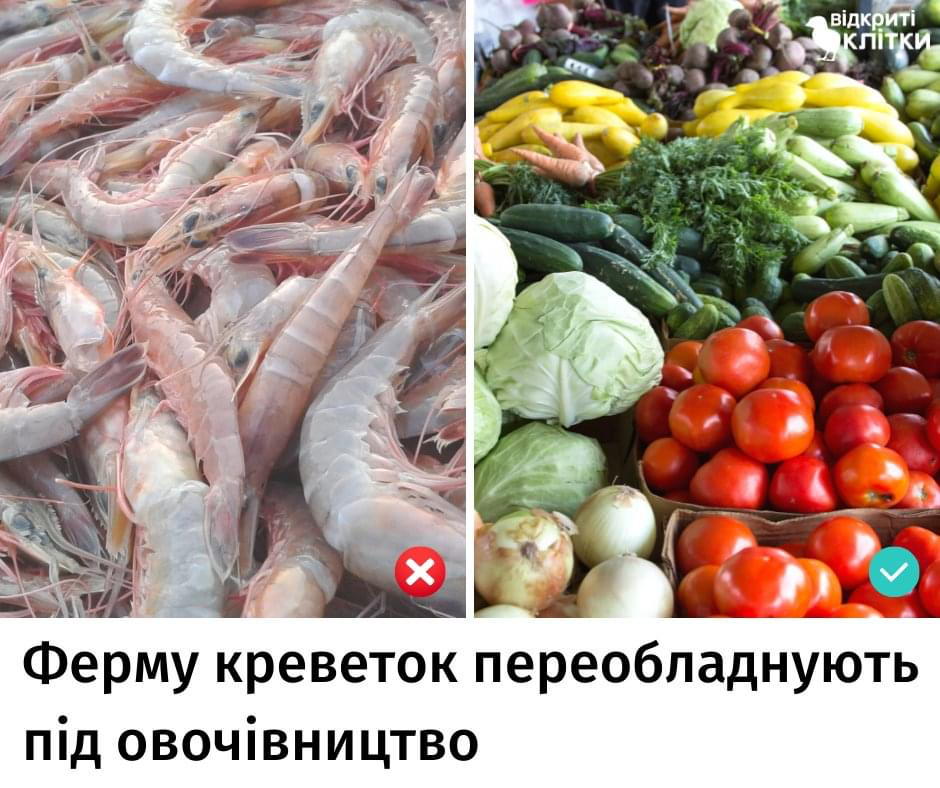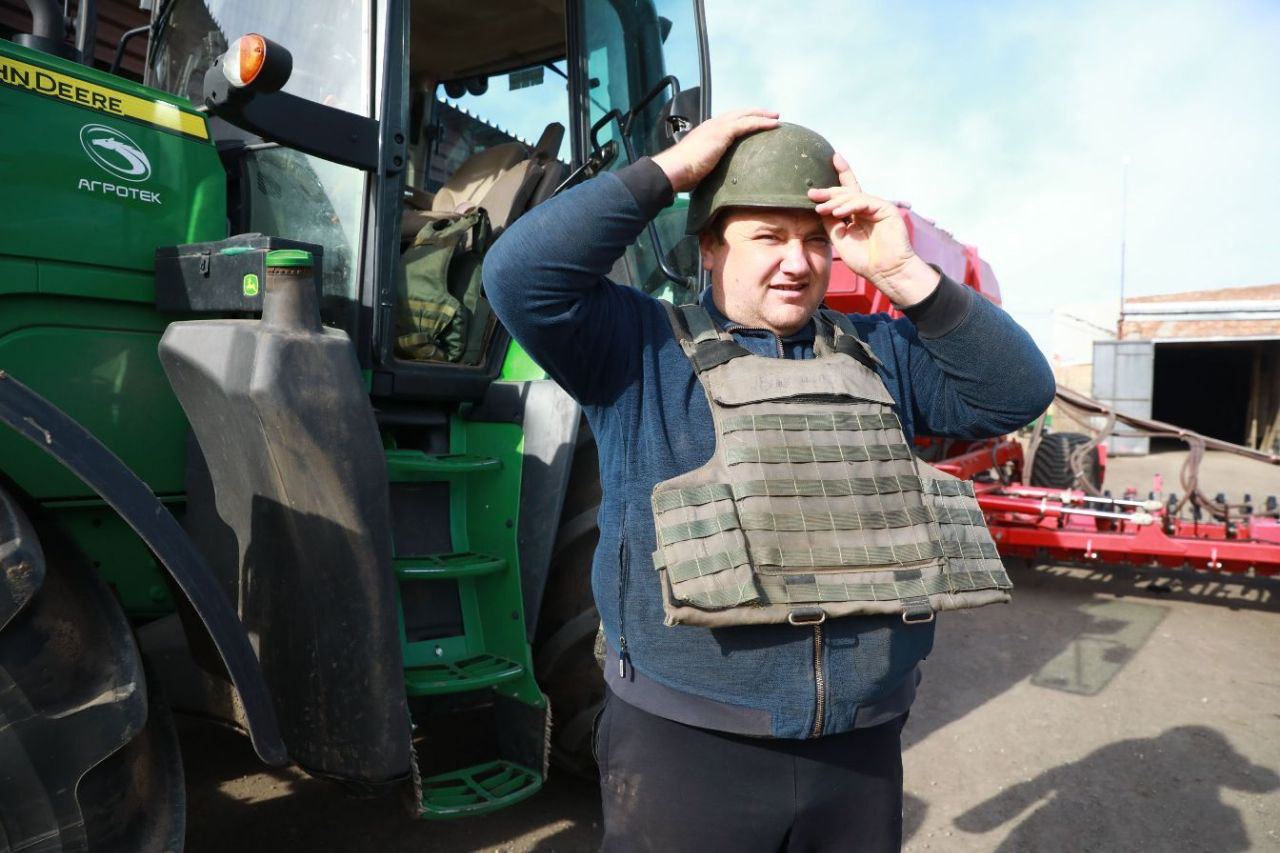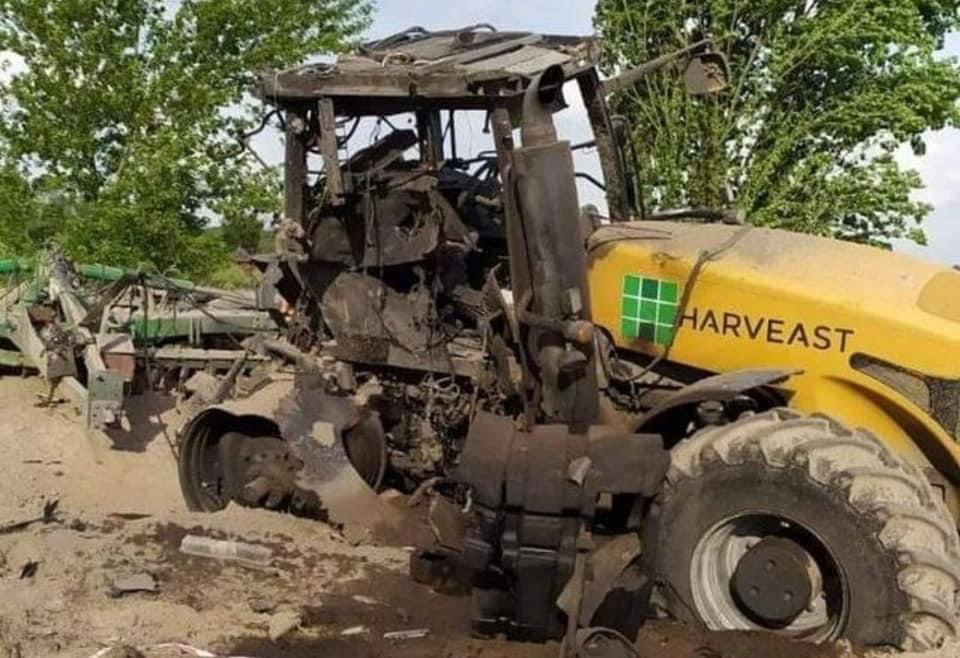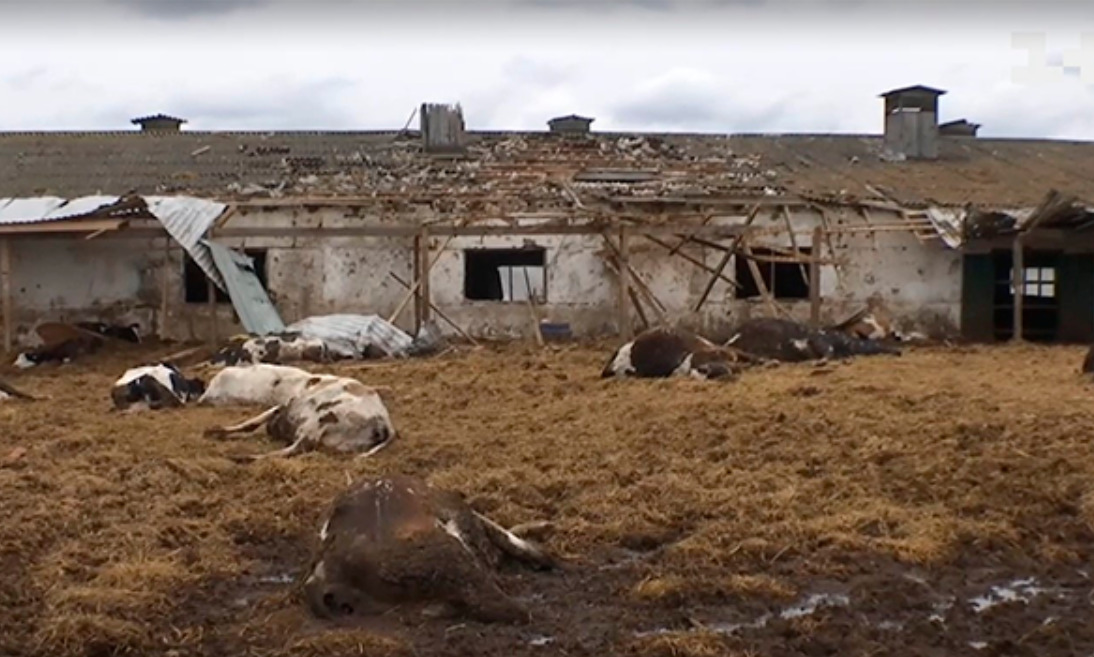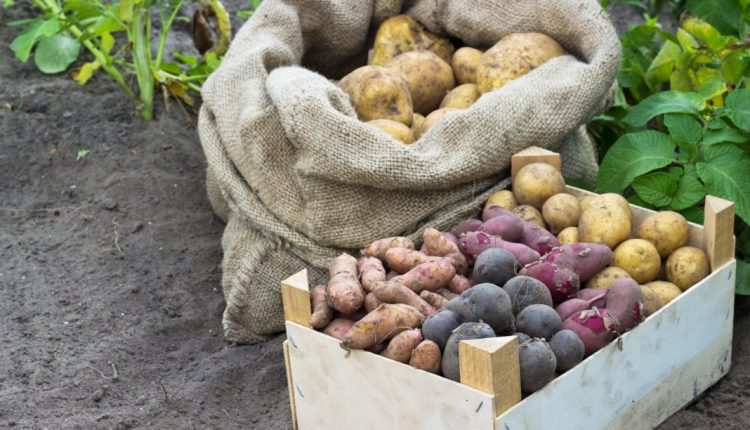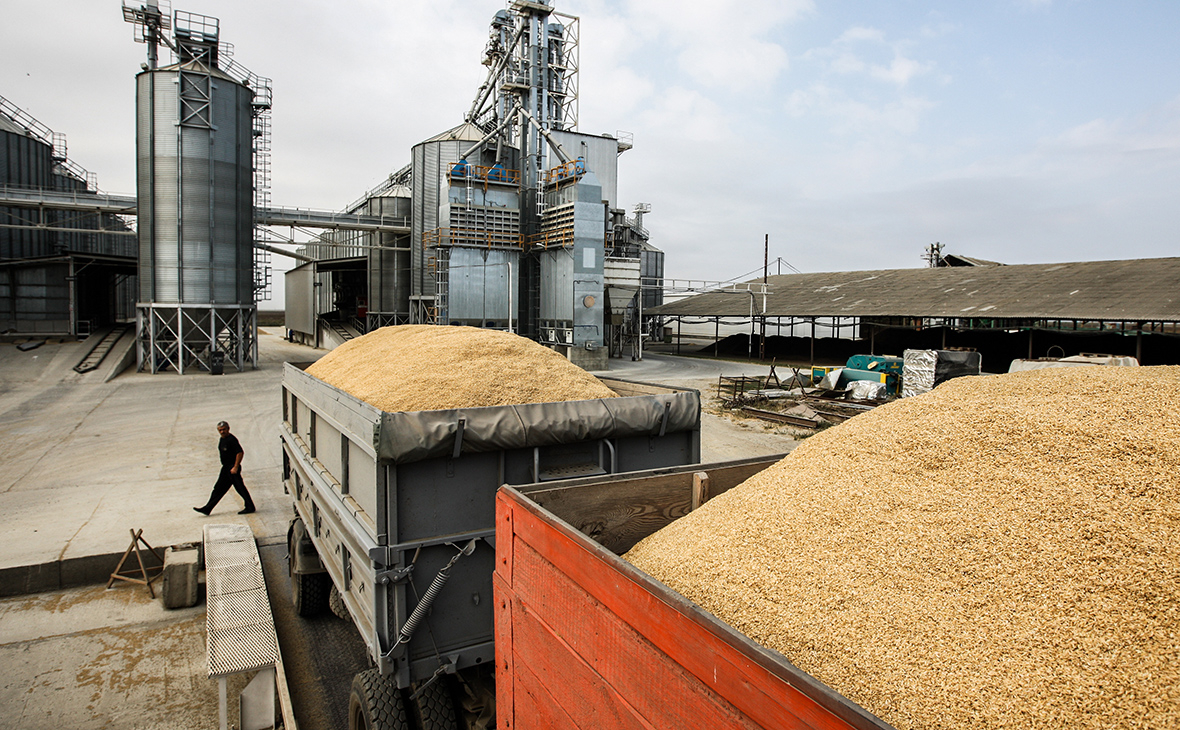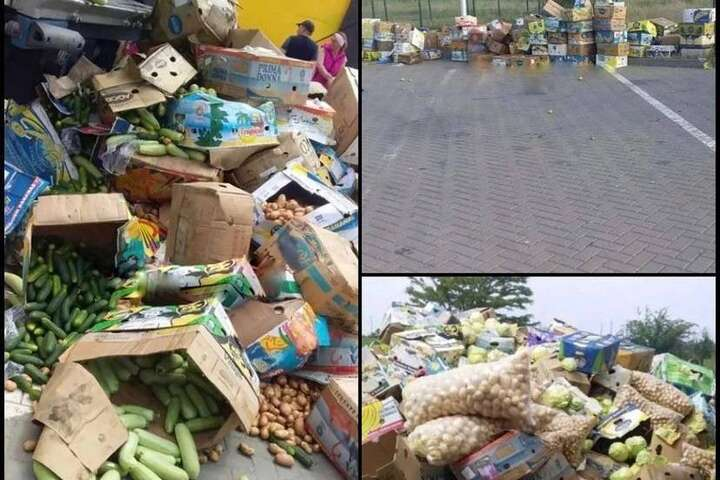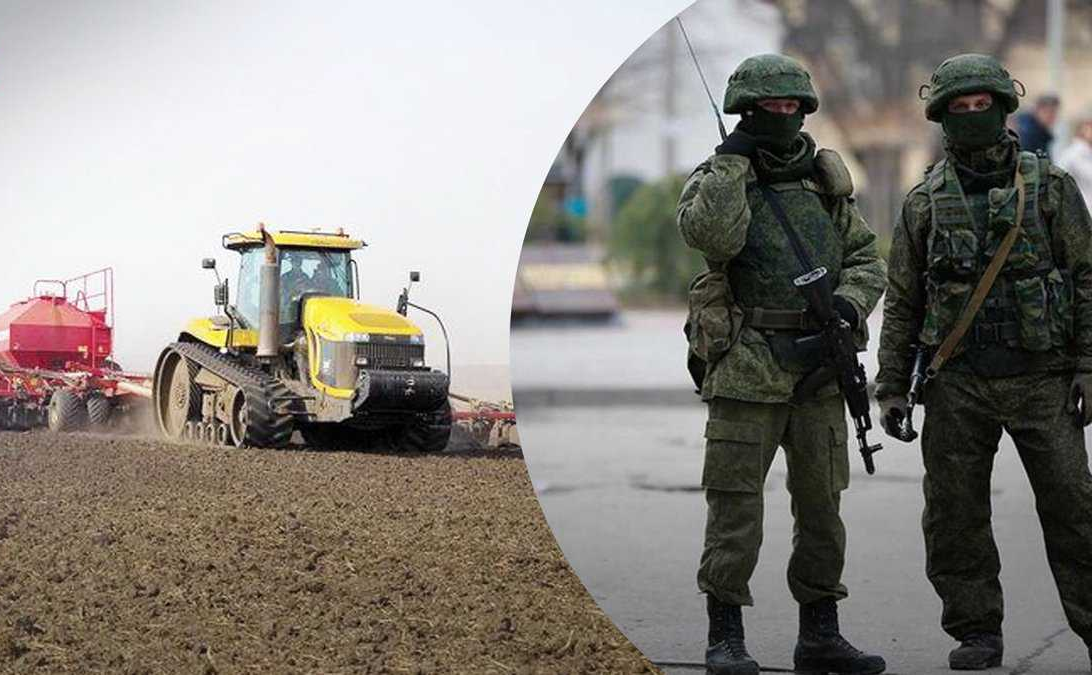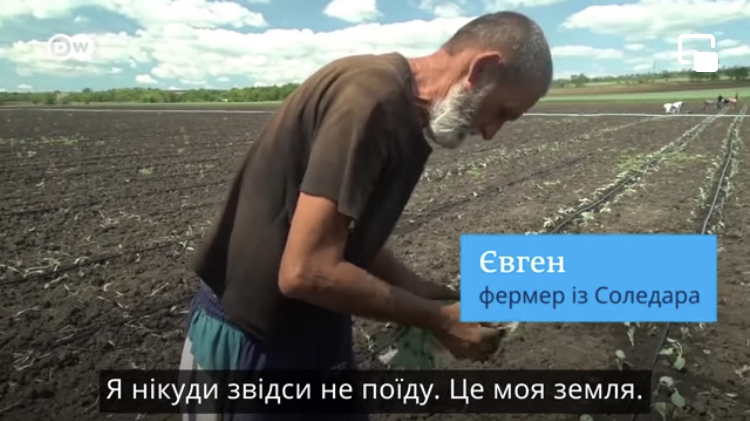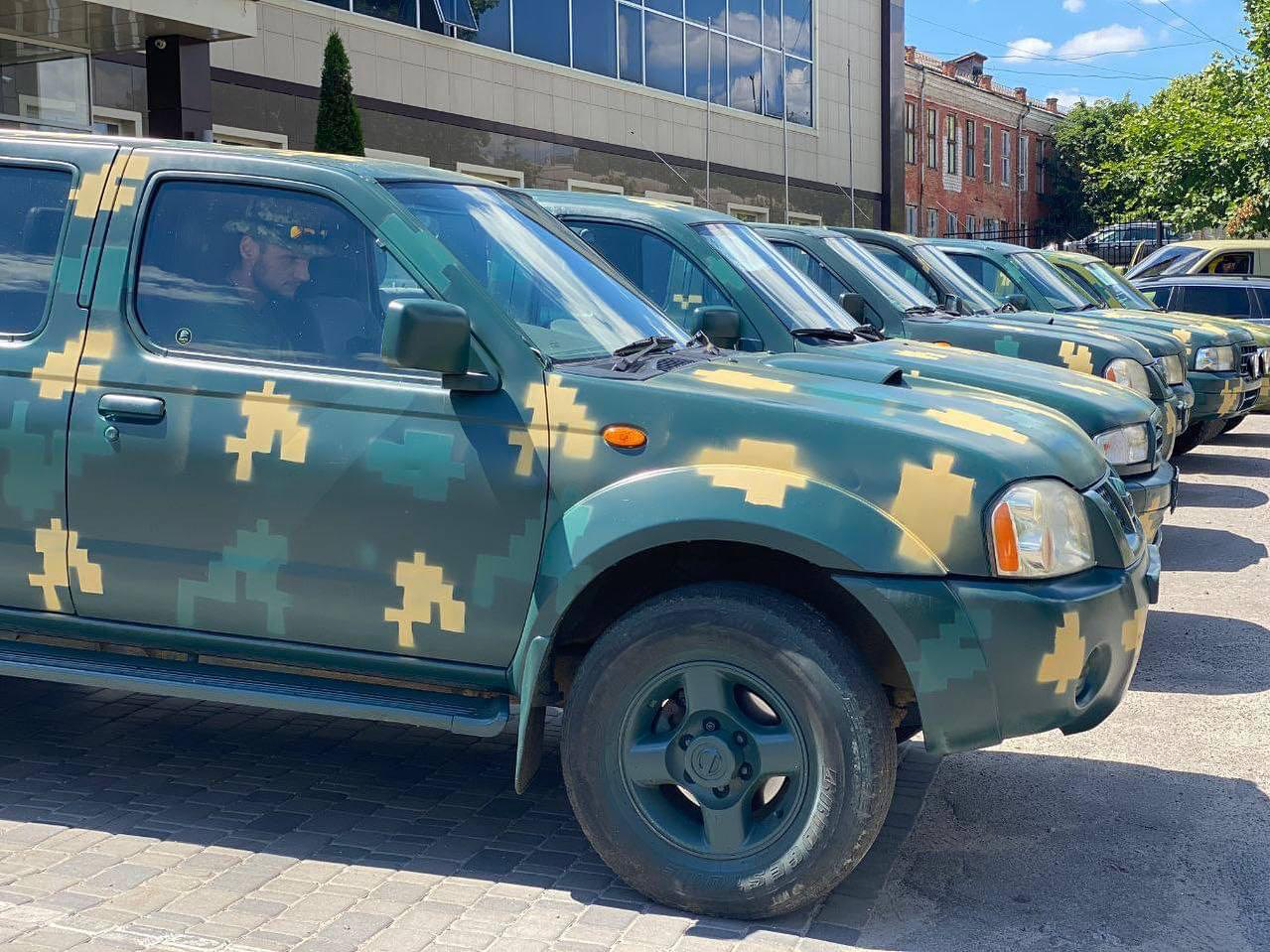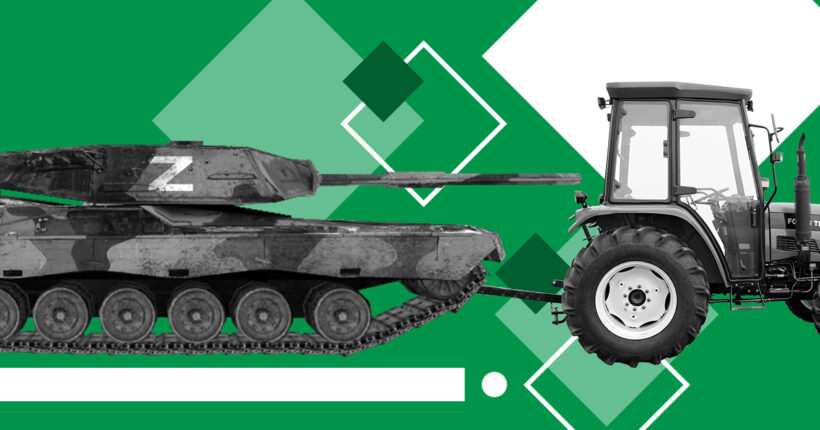
What is the problem?
Due to russia's war in Ukraine, about a third of the agricultural land has not been sown this year. The agrarian Kherson and Zaporizhzhia regions are partially occupied by the enemy. Almost four and a half million tons of grain from last year's harvest are now blocked in the ports of Ukraine. The products cannot be exported due to the closed sea routes against the background of the Russian military invasion. The UN warns that 18 million people are at risk of starvation due to russia blocking Ukrainian ports.
With the beginning of open russia's aggression, it suddenly became clear that the expression "Ukraine is the world's granary" is not just words. Ukrainian agrarians and Ukrainian farmers feed the whole world!
"For a long time, the world did not recognize the importance of Ukraine and the weight of our warnings. "But russia has always known that a few steps against our state, a few steps in our region, and all continents will feel the consequences," Ukrainian President Volodymyr Zelensky said on June 9 during the Organization for Economic Cooperation and Development ministerial meeting at which the situation in Ukraine was discussed.
What is the solution?
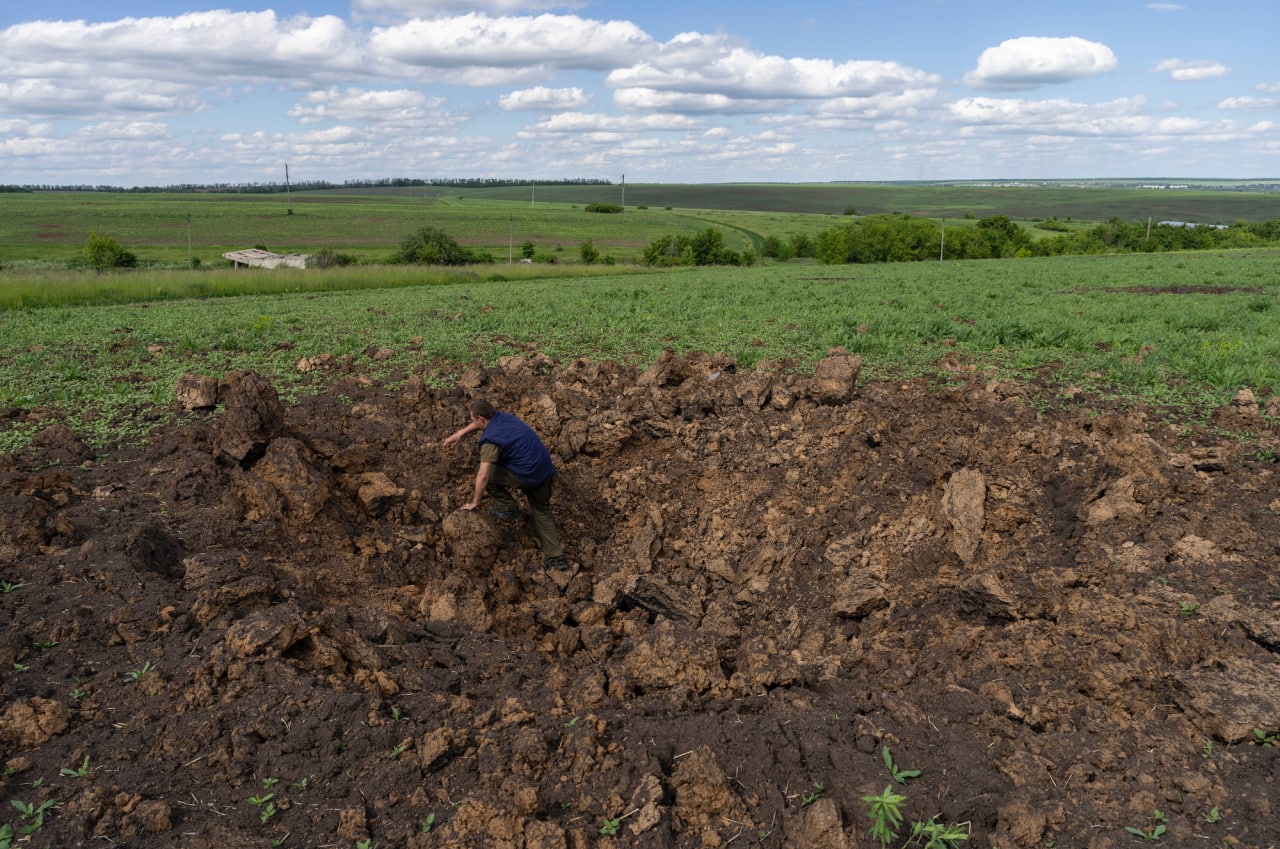
A farmer climbs out of a crater in a field formed by a russian missile in the village of Cherkaska Lozova, the Kharkiv region. Photo: AP Photo / Bernat Armangue
Despite the military operations in the country, this year's sowing has been completed. Before the war, the fate of the future harvest depended on the care of crops and the weather. But now farmers are looking at the sky not only in anticipation of rain. They follow enemy missiles and believe that Ukraine will win and our seaports will be unblocked.
Ukraine does not face the problem of hunger. We will always be able to feed ourselves. Before the full-scale war, small farmers and rural households produced most of the food for local markets, including potatoes, vegetables, fruits and berries, and animal products. During the war, small farmers became the country's food security backbone. Short production chains, supply, and farming ingenuity have shown their flexibility and resilience even in these dire times when large agribusinesses could not always quickly adjust to new conditions.
Farmers are new Ukrainian heroes who, despite everything, continue to cultivate the fields and take care of the food future of Ukraine and the world, holding the agricultural front.
How does it work?
Legendary tractor
Since the beginning of russia's war in Ukraine, Ukrainian farmers have become famous worldwide. It is only worth mentioning the photos and videos of our villagers, who took away, assembled, and towed away the captured russian equipment during the battles. In particular, the "ancestor" of dozens of memes was a photo with a tractor pulling a captured Tor surface-to-air system worth 25 million dollars, which made it onto the pages of the British media outlet The Telegraph. The article stated that the "myth of the Ukrainian tractor" was born in the first days of the war when pictures of a tractor pulling a russian tank appeared online.
Agrarians in Ukraine have already towed dozens of units of a wide variety of trophy equipment — tanks, BMPs, rocket launchers, and tugs. Even the pride of the ruscist army, the heavy flamethrower system "Sontsepek," became farmers' trophy.
The Ukrainian tractor became so legendary that even russian propaganda invented a new fake about it, claiming that "abandoned russian tanks and combat vehicles are stolen by local farmers!" If russia's abandoned military equipment has not been destroyed, farmers and residents simply tow it to the place of loading and send it to the repair shops of the Armed Forces.
Blocked harvesters
russians are those who are really stealing the equipment. russian troops in the occupied Melitopol stole all the equipment from an agricultural equipment dealer and sent it to Chechnya. However, the occupiers failed to use the plundered property. The russians could not even turn on the stolen Ukrainian harvesters because the Ukrainian farmers blocked them remotely.
Grain harvesters, tractors, planters, and other equipment worth $5 million were stolen from the American company John Deere dealer in Melitopol. John Deere software even prevents farmers from repairing equipment themselves. Representatives of the American company also said that they rarely resorted to the remote blocking of equipment functions. And only now has this function come in handy.
Fuel issues
About 15 oil depots were destroyed or damaged due to targeted russian missile strikes on oil refining enterprises in Ukraine. It became one of the reasons for the fuel shortage in Ukraine. Problems with fuel in Ukraine have made corrections in all spheres of life, and the agricultural sector has also felt it. Not all farmers were able to purchase fuel in advance. Because of this, many of them slowed down the pace of sowing. Many farmers even in territories without hostilities, fell out of schedule.
However, our agrarians overcame this problem by looking for other ways — they obtained precious fuel through an exchange or shared it.
Variety change
The war made adjustments not only to the sowing calendar but also to the crop variety. So, the farm of Mr. Volodymyr Slobodyan, a farmer from the Ivano-Frankivsk region, always sowed a lot of corn, soybeans, and sunflowers. Spring wheat and barley are leading this year.
"We shifted such a profitable crop as corn to a less profitable crop such as spring wheat. For the food security of the country. Because the gas price is forecast at 3 thousand dollars per cubic meter for the fall. And corn is a crop that requires large volumes of gas for drying. And a large amount of nitrogen fertilizers which also increased in price a lot."
In general, farmers say this year's processing cost for one hectare will be fifty percent more than last year. Does this mean that the new crop will also increase in price? Farmers say: not necessarily. The price may not change. Everything will depend on the establishment of exports abroad.
Vegetables instead of shrimps
This spring, the largest industrial farm for Pacific white-legged shrimp in Ukraine should start operating in the Mykolayiv region. However, the war changed the plans, and the entrepreneur Lubomyr Haydamaka decided to reformat the business.
"This is not a reason to despair and give up. We started growing vegetables in greenhouses to strengthen our community's food security. First, we sowed seedlings and early vegetables (lettuce, arugula, radish), and then we will grow tomatoes, cucumbers, herbs, and have fresh vegetables until the very frosts," said Mr. Lubomyr.
Moreover, the farmer calls on the business to be able to repurpose itself so that it is profitable for our country during the war, for investors, and for the village residents who get new jobs.
Mine danger
Zaporizhzhia farmers began sowing despite the constant threat of shelling. Farmers had to work in bulletproof vests and helmets. Before the passage of equipment, the field was checked by sappers.
Unfortunately, the russian troops "sowed" a lot of "surprises" on our fields. The photo below shows the harsh reality of Ukrainian machine operators who suffer from anti-tank mines.
"It is necessary to pay tribute to the fact that Ukrainian farmers boldly go into the sowing campaign, despite such difficult objective circumstances. We see it everywhere. As confidently and loyally as the military fights, farmers go out into the fields with the same courage and loyalty," the Minister of Agrarian Policy and Food of Ukraine, Mykola Solsky, emphasized in April. He added that it is the most difficult for farmers in the front-line zones because, firstly, the logistical chains are broken there. Secondly, it is rather dangerous. Thirdly, the farmers must have the courage to carry out sowing in front-line or occupied areas.
Cow "safari"
Near Chernihiv, now liberated by the Armed Forces, the occupiers abused not only people but also animals. Orcs destroyed a dairy farm and organized cows and pigs "safari" in the villages of Lukashivka and Ivanivka, located near Chernihiv borders. After the village liberation, the farmer counted 110 dead carcasses – adult cows and calves. The occupiers even shot a fat cow that had begun to calve. Milk for children was brought to Chernihiv for free from this farm since the beginning of the war.
"And how many more they ate, shot from machine guns, made kebabs in the church. A third of the houses, about fifty, were simply razed to the ground. Agricultural machinery was destroyed and looted," the farmer tells about the stay of the ruscists in the affected villages.
From the very beginning of the russian invasion of Ukraine, the Chernihiv region was subjected to terrible bombings. Now the city is gradually coming to its senses. The farmers of the region are reviving from scratch what was destroyed by the troops of the terrorist country in a matter of hours.
Mutual help and unity
The Kharkiv region is also on the list of regions most affected by the war. Despite this, the region's residents do not lose their optimism and drive. In safe areas, agrarians planted crops, and farmers and households planted the "second bread" – potatoes. It is worth noting that residents of the Kharkiv region had the opportunity to get high-quality seed potatoes for free.
Kharkiv farmers received 40 tons of seed material of Dutch selection from Agrico Ukraine. The producer supplies potatoes free of charge to residents of various regions of Ukraine within the framework of the KartopelkaUA project, carried out in cooperation with the USAID Program for Agrarian and Rural Development — AGRO.
"Do you know what is currently the main thing for supporting our country? Unity. Unity for strong strategic actions, for victory on the battlefield, for maintaining an invincible spirit, for humanitarian aid, and in our case also for ensuring Ukraine's food security," said the company, which shared seeds with farmers for free. The project implementation will be continued in other areas.
The life of farmers in occupation
It is the hardest for farmers in the areas currently occupied by russia. In the occupation zone, the ruscists put merciless pressure on the farmers. Invaders kidnap farmers, trying to oppress them physically, including torture. They do this to continue agribusiness, but they plan to take the harvest by force for the needs of their units and local "authorities."
Farmers face constant raiding and grain and equipment theft. They have to hire "dpr" and russian military personnel. There are virtually no opportunities for watering, purchasing fertilizers, or gasoline. The elevators have been captured or looted, so even those able to plant crops are worried about how they will harvest and where they will store it.
In addition, the russian occupiers plan to carry out the so-called "nationalization" of European and American-owned agricultural enterprises. This kind of revenge is for sanctions.
The Kherson region, which supplied almost all of Ukraine with early vegetables and greens, found itself in an extremely difficult situation after the occupation by russian troops. Farmers are unable to export their products outside the region as the russian military has completely blocked the exit from the occupied territory. And in the Chaplin district, the russian military forces farmers to dig trenches with their equipment.
In the city of Melitopol, the Zaporizhzhia region, which is also temporarily occupied by russian troops, representatives of the russian federation are stealing grain from local farmers. Lately, they have scaled up the thefts. russian occupiers began stealing grain from Melitopol farmers back in May. They took grain from the elevators and took it out to Crimea by motor vehicle (20-30 cars per day). Now representatives of the russian federation have involved other types of transport. "They started taking them out by train. Today they are finding new vehicles, taking everything to the port of Berdyansk, and will take it out from there by ships and barges. Accordingly, it's a different scale of theft. And they are preparing to steal the new crop that our farmers planted in the fall in the same way," said Ivan Fedorov, the lawful mayor of Melitopol.
Farmers throw away young vegetables en masse simply on the roadside in the Zaporizhzhia and Kherson regions. They are not allowed to enter the territory of free Ukraine with the goods. And many do not want to sell their goods for pennies to the occupied Crimea. However, the occupiers force people to give away their products for nothing and rob them at gunpoint.
"Armed "dpr" people came to the farmer's house. They put the family on their knees and told them that they had to take all their harvest to Crimea within three days. Or everything will be taken away. For the husband to be docile, they threatened to take his son "to the basement." He had to take everything out. But these orcs will not leave them alone. They asked – what did you grow before? Vegetables, strawberries, potatoes. This year you will do the same. And if not, then we will take away your fields," says a resident of the Beryslav district of the Kherson region. That is, people who do not want to work for the occupiers have almost no choice.
Farmer resistance
However, intimidation tactics do not work everywhere. In one of the districts of the Kherson region, during an attempt by the russian occupiers to steal a combine harvester from one of the agricultural enterprises, the ruscists were repulsed. The farmers opened fire and shot dead two of the occupiers. It was reported by some Ukrainian mass media, citing residents who asked not to be named and not to say where exactly the conflict took place.
According to the agrarian, armed men recently came to his enterprise and began to demand the keys to the combine, threatening them with assault rifles. "They were in military uniform and said that they were taking equipment "for the army needs." When we didn't agree, they started "bullying" even more. The guards were not scared and opened fire. Two 200s and a couple of 300s escaped. We are waiting for new visits," said the farmer.
Local agrarians also said that the farmers are forcing them to sell finished products for pennies and are trying to force them to grow a new crop. "The russians tell us directly — either you put crops into the ground, or we put farmers in prison. We see that they will not do anything here. The invaders only know how to rob and destroy. We still don't know what to do. We are trying to unite and wait for the release," said another farmer from the Kherson region.
Donetsk region farmers
But apparently, no one in the country believes in the Armed Forces as strongly as the farmers who sowed the fields in the Donetsk region. Ukrainian farmers in Donbas continue to work despite fierce fighting nearby. "I won't go anywhere from here," says Yevhen, a farmer from Soledar. "This is my land!"
Assistance for the Armed Forces
Ukrainian farmers not only hold their front, despite all the difficulties caused by the war. They also actively help our defenders. At their own expense, farmers buy thermal imagers and cars, body armor, and quadcopters for the army. And, of course, they send tons of their products to the front line!
More useful solutions!
Even the smallest piece of our fertile land is our wealth. Tractor troops do their job, but each of us can also become a little farmer and use all available land resources to grow vegetables, even on the balcony or in the backyard.
Rubryka already wrote about the All-Ukrainian initiative, Victory Gardens. It is aimed at the available land plots' efficient use for growing food products. Due to hostilities in many regions of the country, where crops were previously harvested, all supply schemes have been destroyed. Population growth due to internally displaced persons in some regions may lead to a food crisis. So we appeal to all Ukrainians to join the initiative!
In many communities you can get a plot for growing vegetables and greens by contacting the Department of Social Protection. Let's help Ukrainian farmers! Let's plant our Victory Gardens!
And another useful solution for our farmers. An electronic platform for collecting information on losses in our agricultural sector due to russia's war against Ukraine has been launched in Ukraine.
With the help of the service, farmers, farms, and agricultural enterprises can apply and report the damage for processing by state authorities with further compensation.
Types of property that can be documented as destroyed, stolen, or damaged:
- land;
- infrastructure facilities;
- agricultural machinery;
- trucks and cars;
- resource stocks;
- equipment and facilities;
- products of livestock and crop production.
You can document the damage via link.


